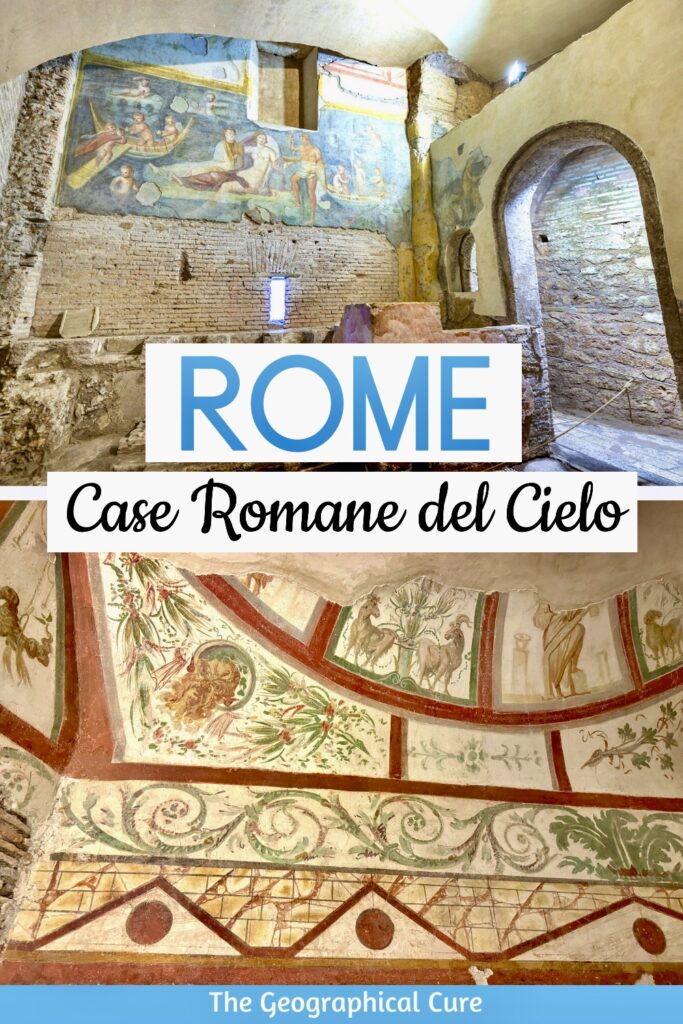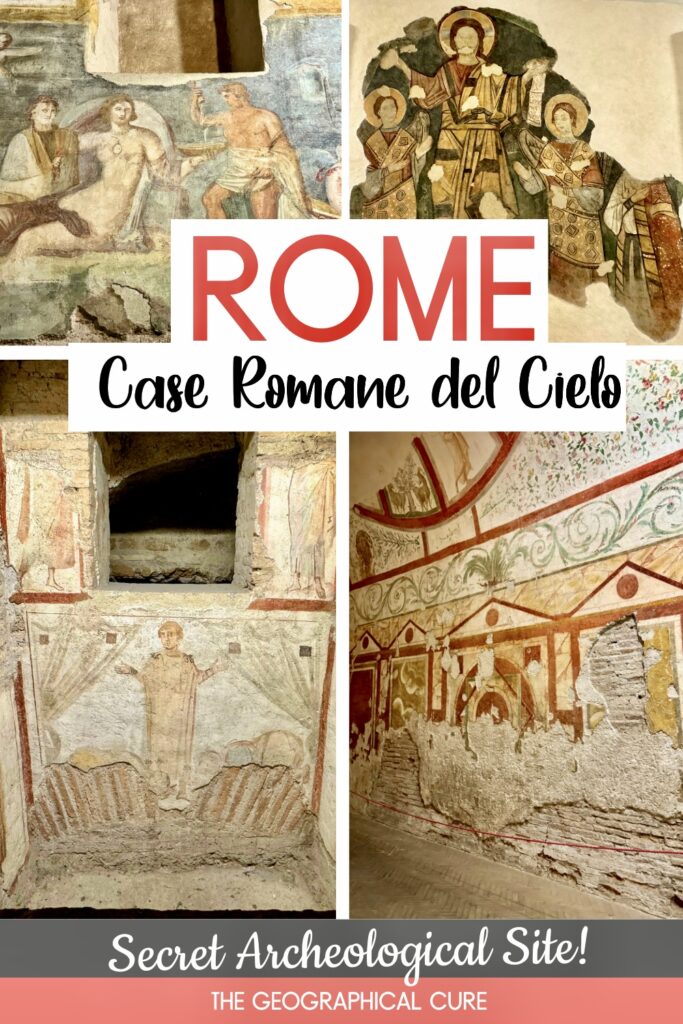Want to explore a secret ancient treasure in Rome? Check out the Case Romane del Celio (Roman Houses of the Celian Hill). I almost had the place to myself as I explored each room!
This underground site reveals Rome’s layered history. It’s a collection of ancient homes found underneath the Basilica of Saints John and Paul.
Dating from the 2nd to 4th centuries, these domus offer a peek into domestic life in Ancient Rome. They evolved over time, with various modifications and uses.
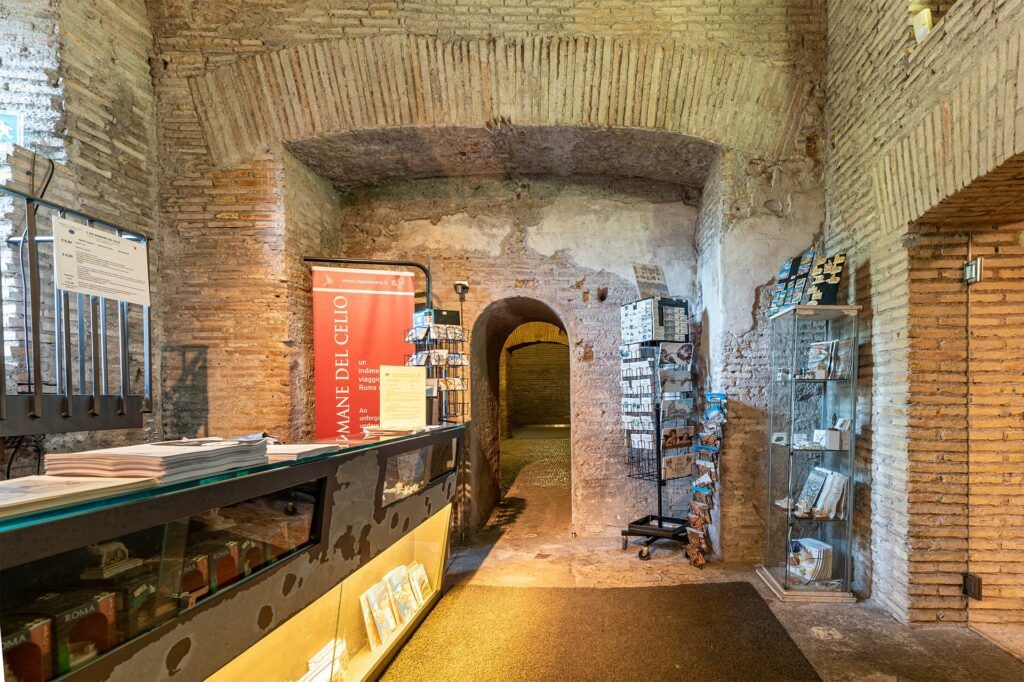
Initially, they were two homes.
In the 3rd century, they were converted into a block of apartments. By the 4th century, a wealthy Roman family transformed the site back into a single grand house.
The Case Romane del Cielo is famous for stunning frescoes on walls and ceilings. They’re detailed and vibrant, showing scenes from myths, nature, and daily life.
The Case spans several floors with rooms and passages. Walking through, you’ll see areas for living, cooking, worship, and trade.
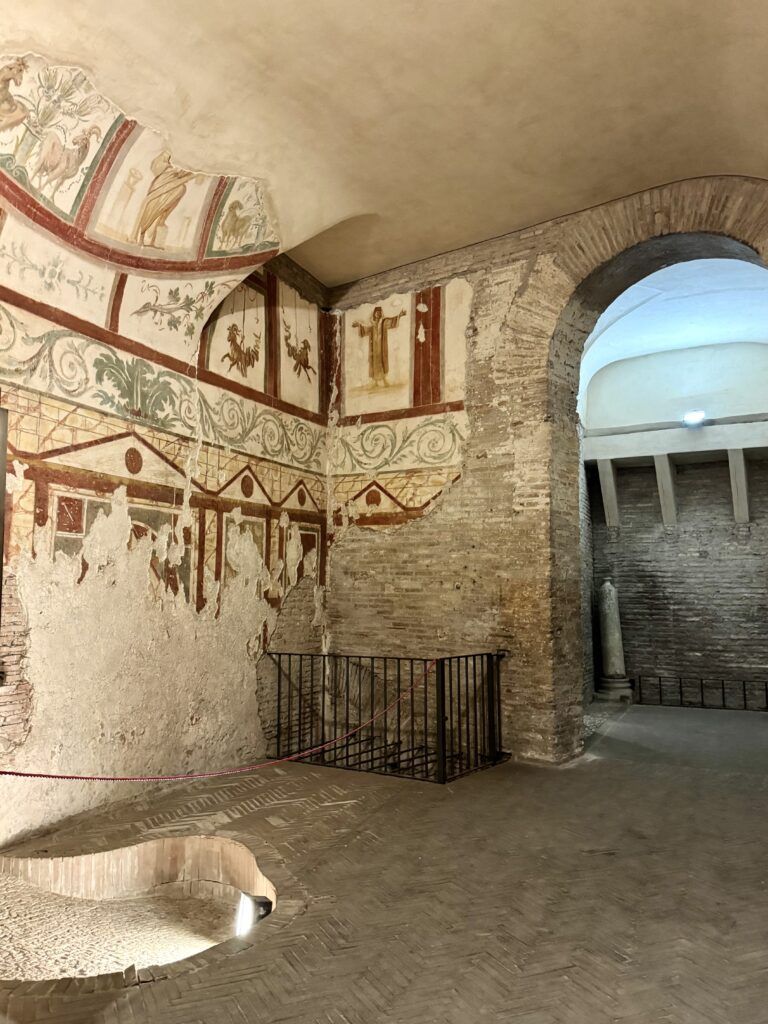
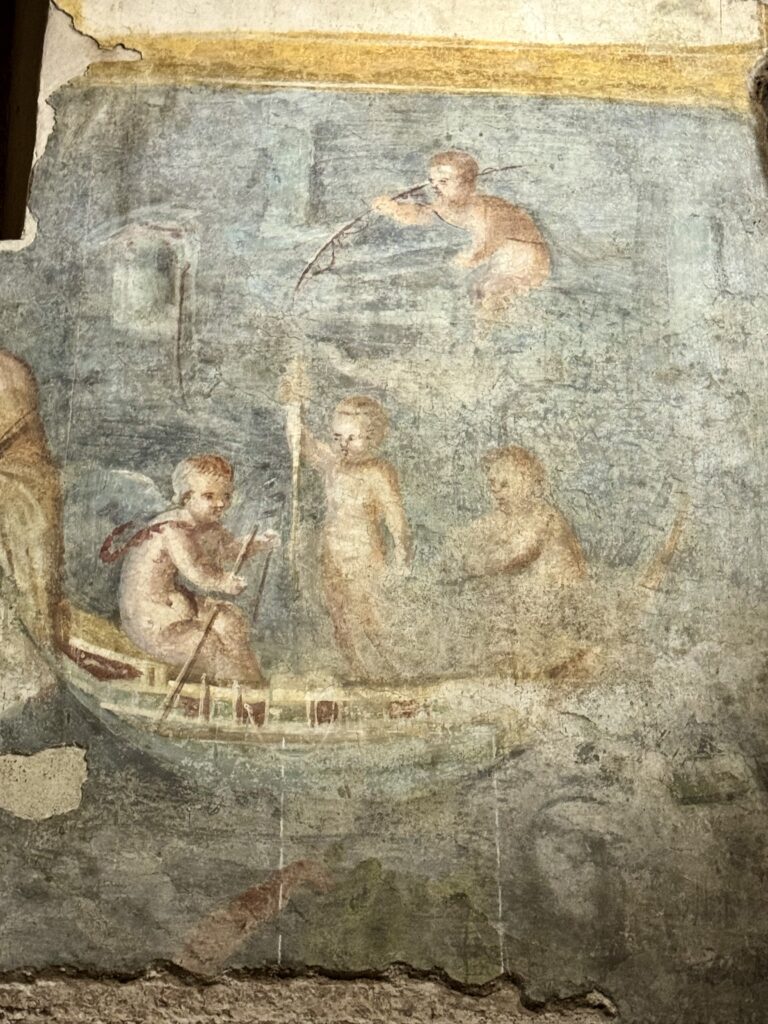
These houses are linked to Saints John and Paul, two 4th century Roman martyrs (not the apostles). They were said to be army officers who embraced Christianity and died for their faith under Emperor Julian.
While evidence is sparse, it’s theorized they were executed and buried in the Case.
It was discovered in 1887 by Father Germano of St. Stanislaus. The site became a museum in 2002. It’s a serene journey through Rome’s past.
>>> Click here to book a guided tour
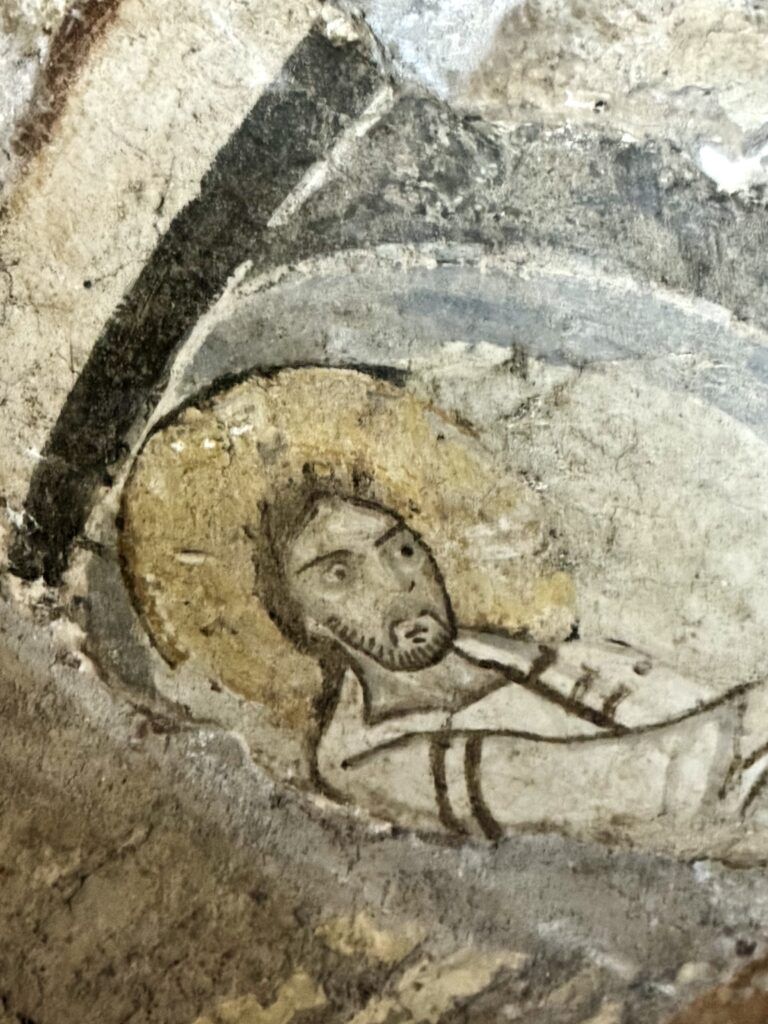
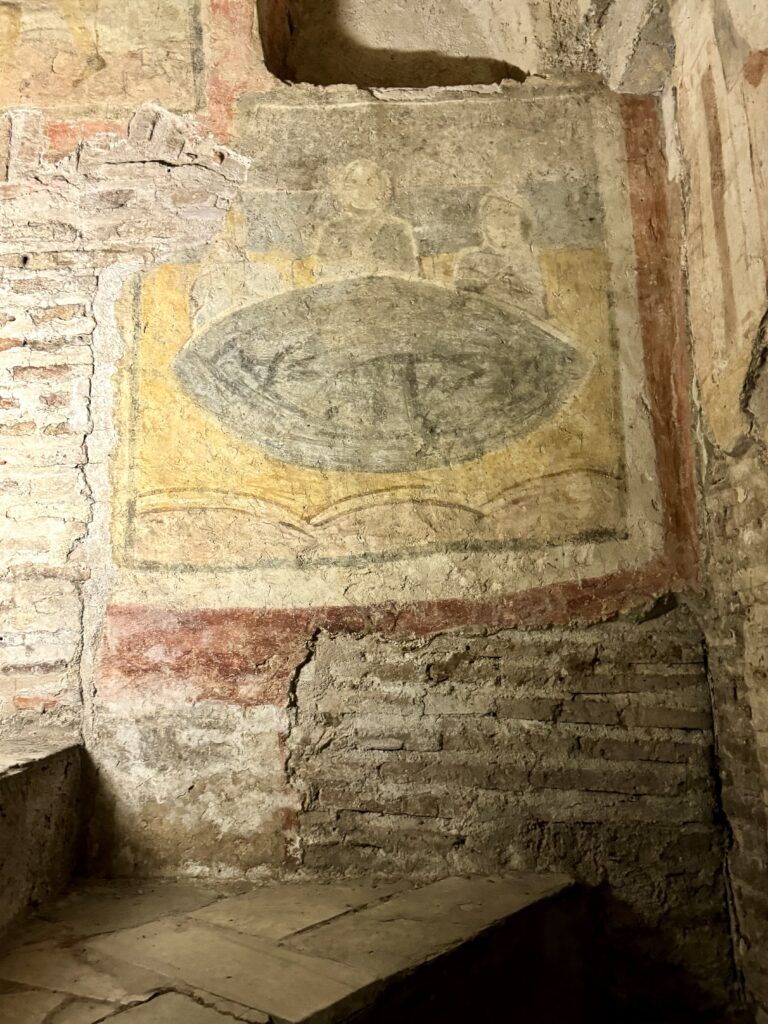
Guide To Case Romane del Cielo: What To See
The official route twists and turns, but there are signs. There are about 20 rooms to explore. Here are the highlights of what you’ll see along the way.
Oratory of Saint Salvator
Your first stop is a medieval oratory. It’s a small chapel, which was once covered with frescos depicting the passion of Christ.
You can still see traces of the fresco decoration. One is supposed to portray an episode of the martyrdom of Saints Paul and John.
The fresco of Christ’s resurrection was in such a fragile state that it was removed and put in the museum, which is the final stop on your visit.
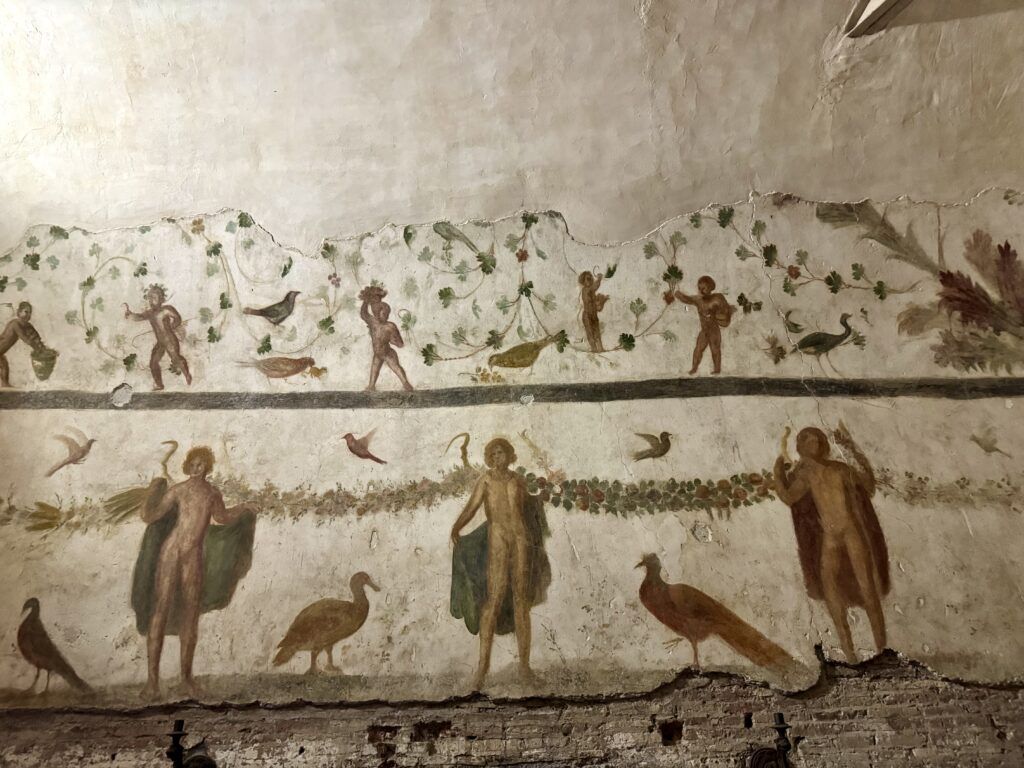
Room of the Genii
This room was once a 2nd century shop, but was transformed in the 4th century to a place of luxury. There are frescos on all four walls.
In the lower panel, there are figures of youths with capes who are called “genii” or guardian spirits. Behind them are floral festoons and various species of birds.
In the upper panel, there are little cupids. Some are gathering fruit. Others carry baskets of it.
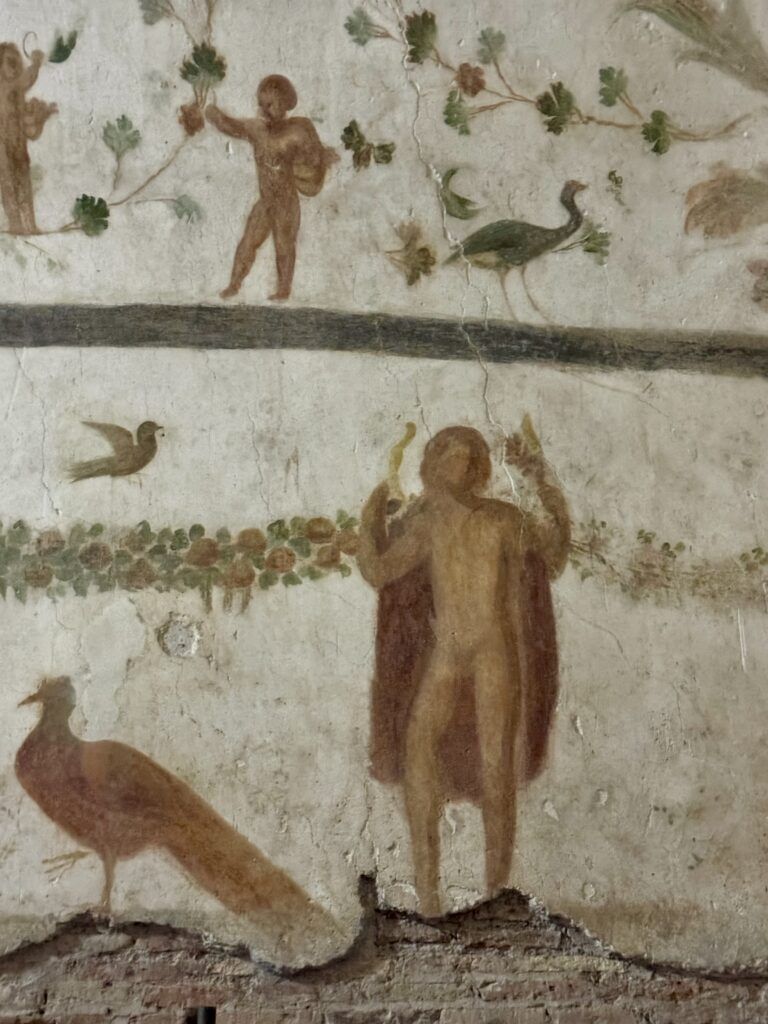
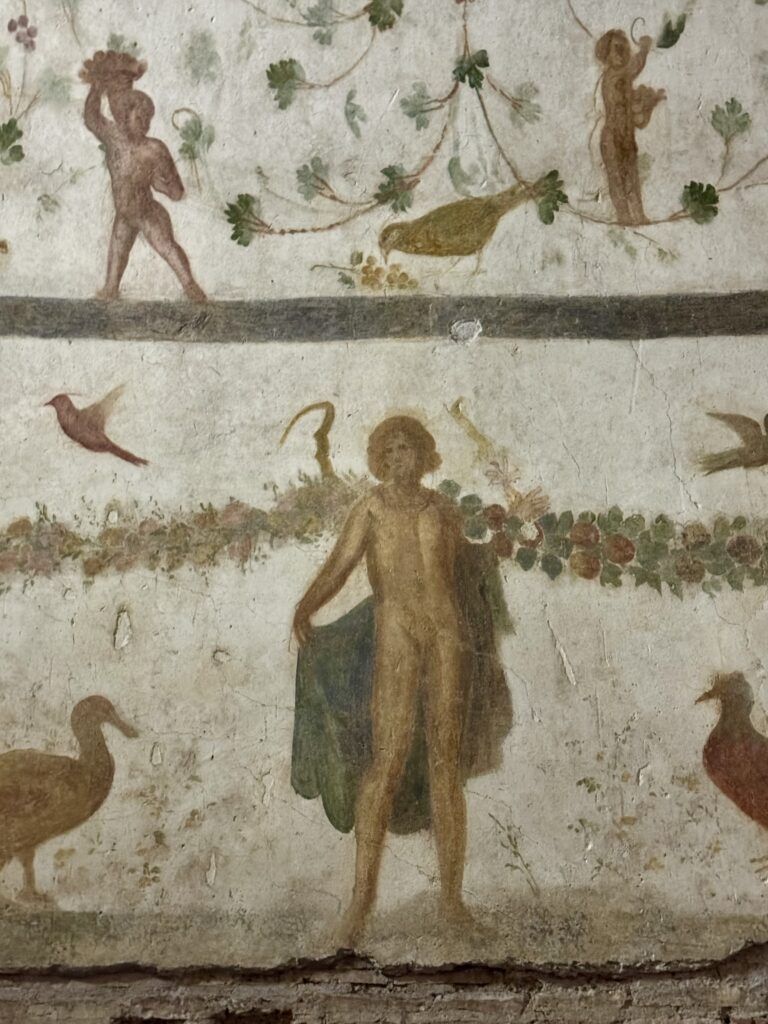
Room of the Fake Marble
This room is notable for its frescos that imitate the look of marble.
Even for wealthy owners, marble was often prohibitively expensive. So they imitated the look of marble in the frescos.
There are also faint traces of acanthus spirals and floral decoration. But most of that has been lost.
There’s an altar in the room too. It’s not ancient, but rather was once used by the basilica above.
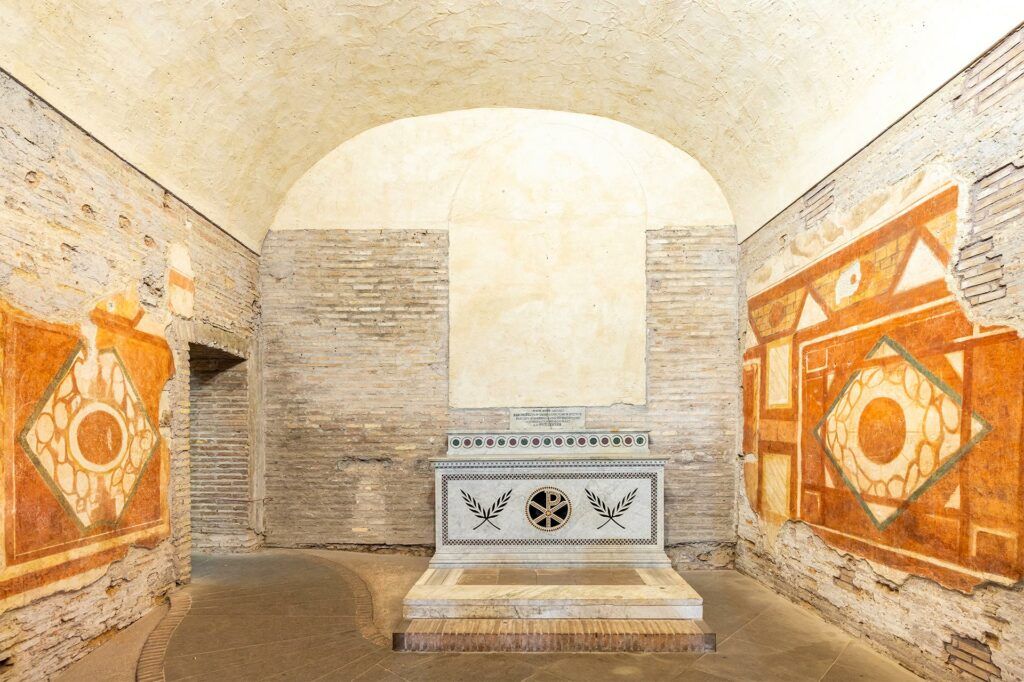
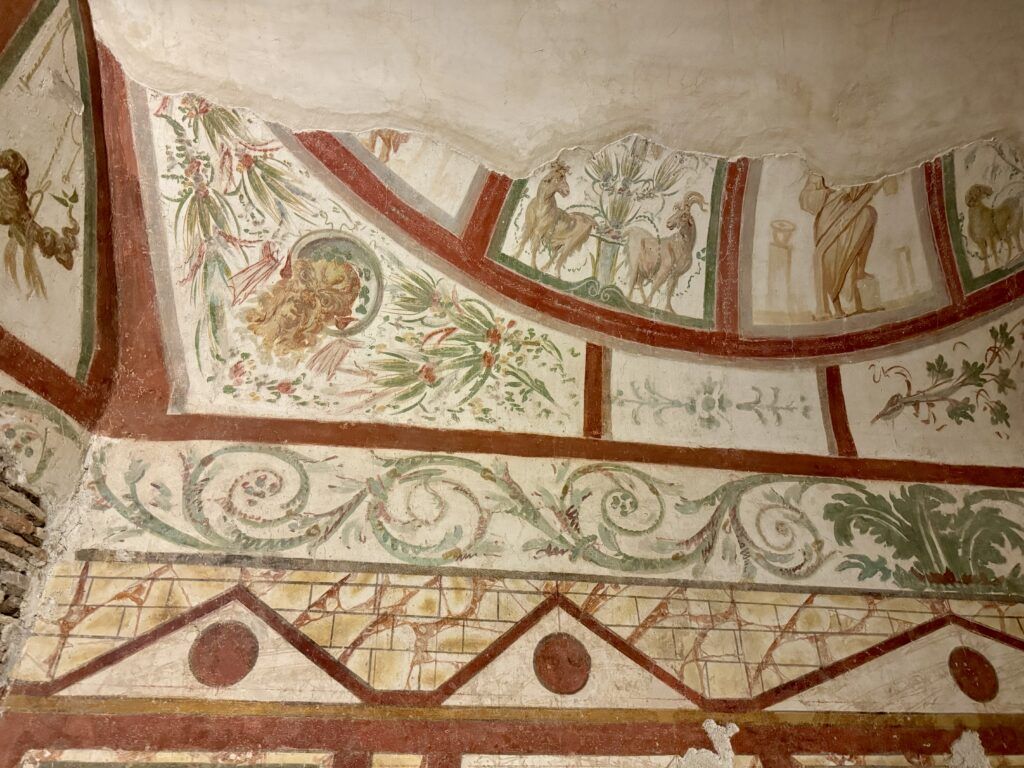
Room of the Worshipper
This is one of the most beautiful rooms. The frescos and images are much more intricate.
The lower panels feature the same imitation marble frescos. The upper panels feature pagan gods, philosophers, theater masks, flowers, marine creatures, animals, etc.
There is an also female “Orans” figure with outstretched open arms, called the worshipper. She’s sometimes interpreted as the sole Christian figure in a sea of pagan images.
Another theory of the fresco decoration is that the worshipper is a Roman pieta and that the masks and vines represent the four seasons.
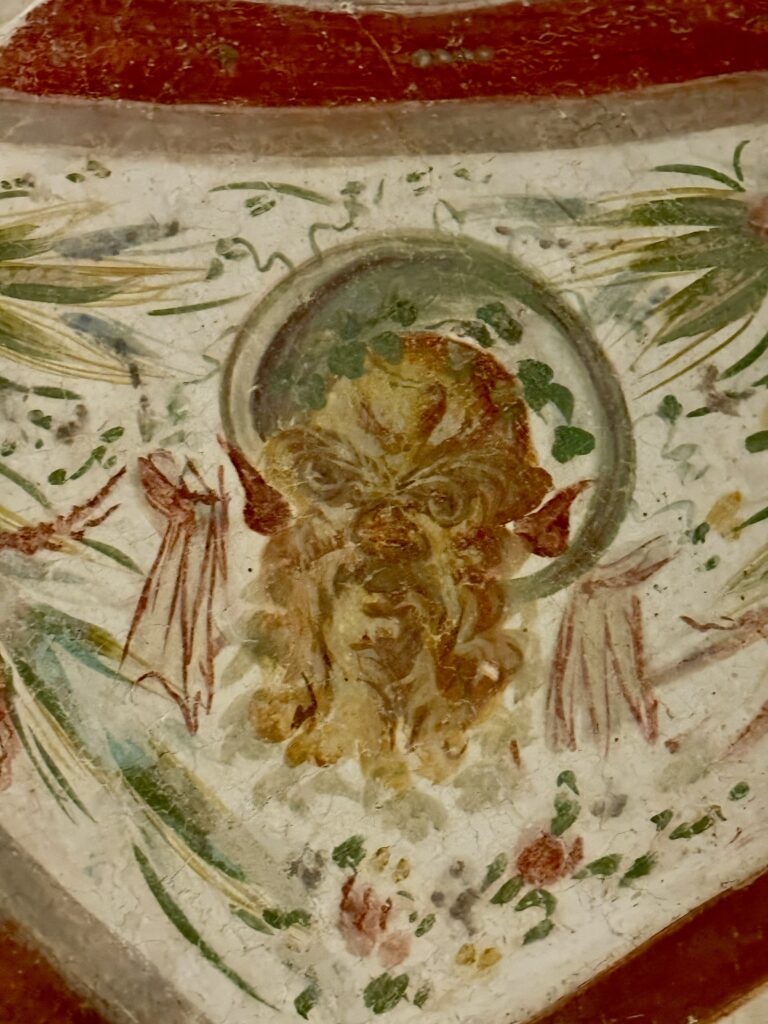
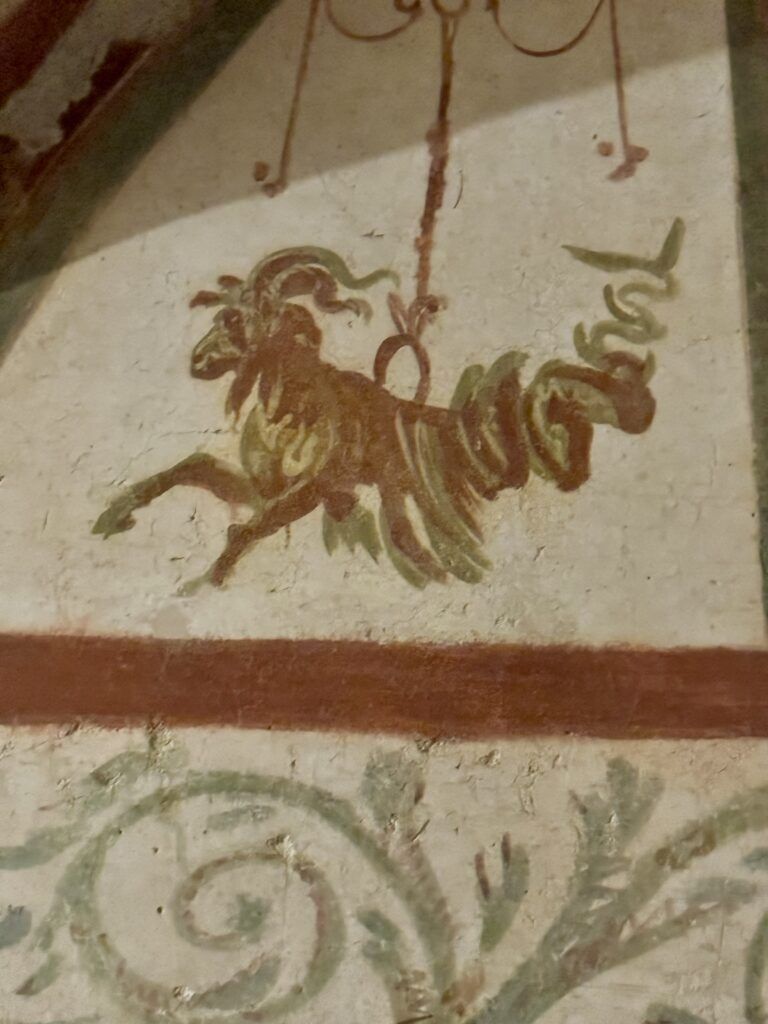
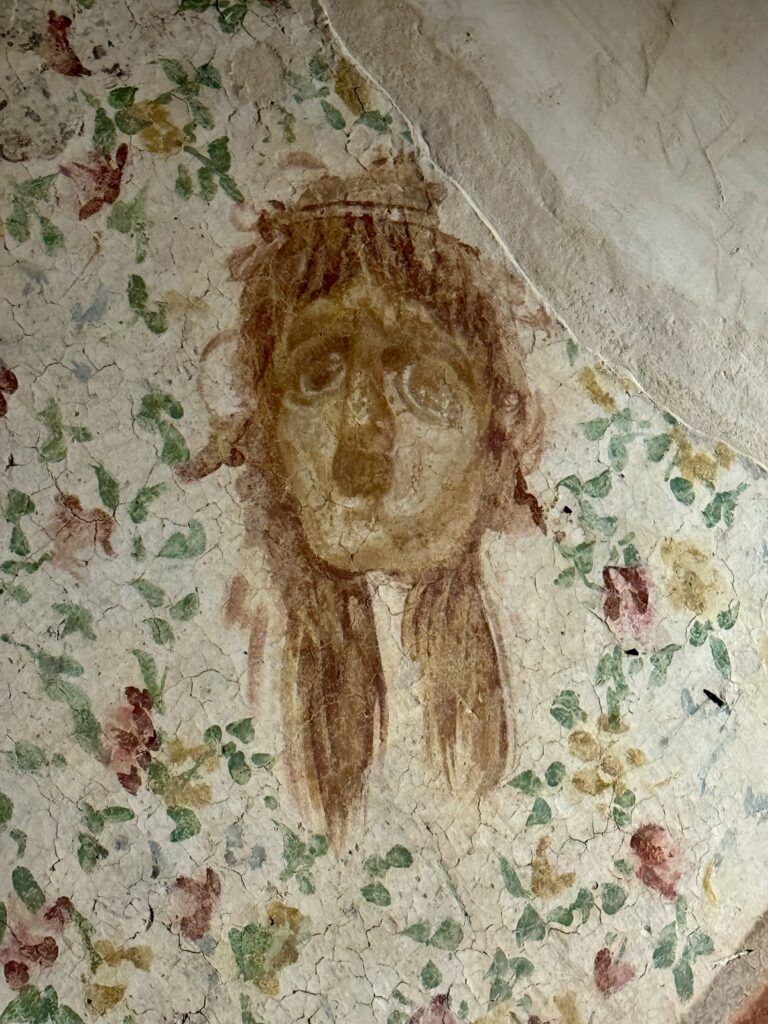
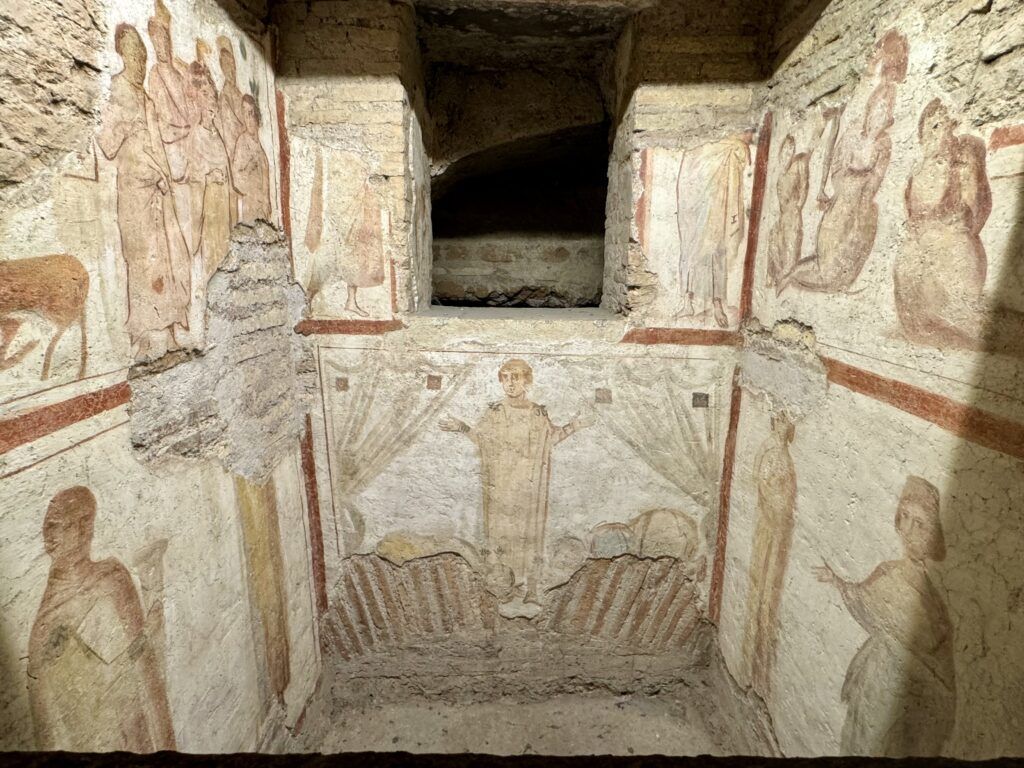
Confessio
You walk down a little lane and then arrive at the Confessio.
This is a small private shrine with frescos of Saints John and Paul, as wells the martyring of Crispus, Benedict, and Srispianus.
The two kneeling figures are thought to be the wealthy 4th century owners, Pammachio and his wife Paolina.
There are remains of a marble box, which archaeologists theorize could have held the remains of the two saints.
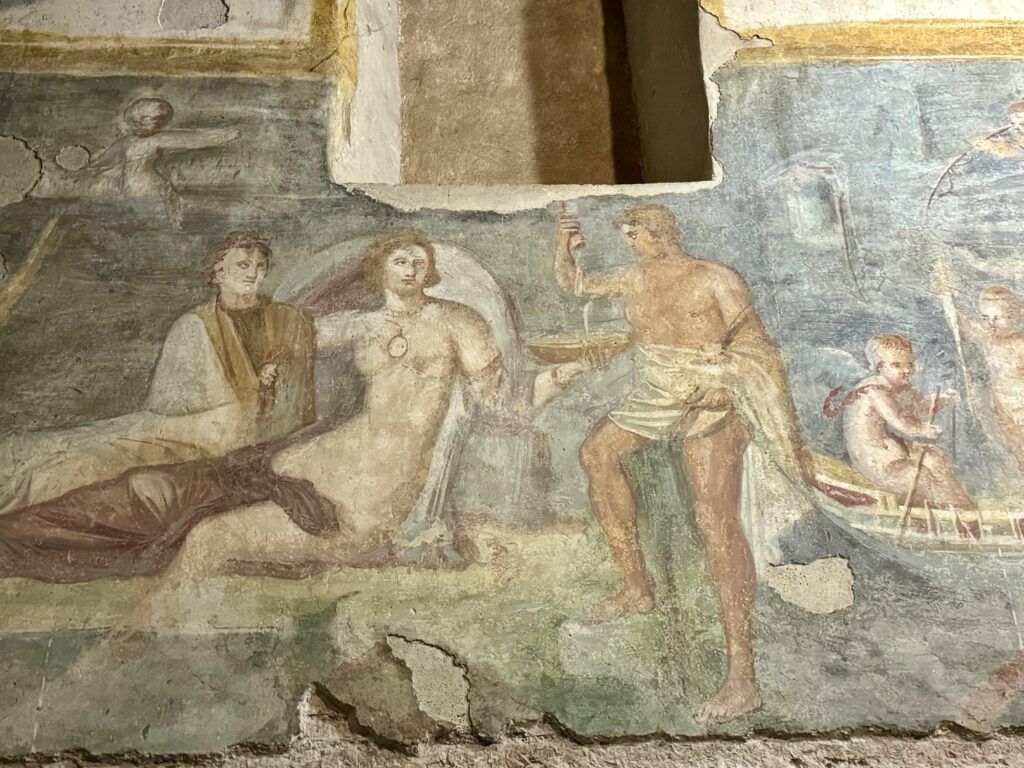
Courtyard/Nymphaeum
This area was once an indoor courtyard filled with fountains and a well. There is a large 3rd century fresco covering the main wall.
It likely depicts the Roman god Prosperine. It’s hard to know if she signals the return of spring or whether she is returning to Hades in the underworld.
Another interpretation of the fresco is that the goddess in the middle is Venus. And Bacchus is pouring her a drink.
The figures are in a marine setting. Small cupids are fishing or rowing a boat in the background.
On the floor are black and white and polychrome tessera mosaics. The polychrome ones are decorated with chalices of flowers and doves.
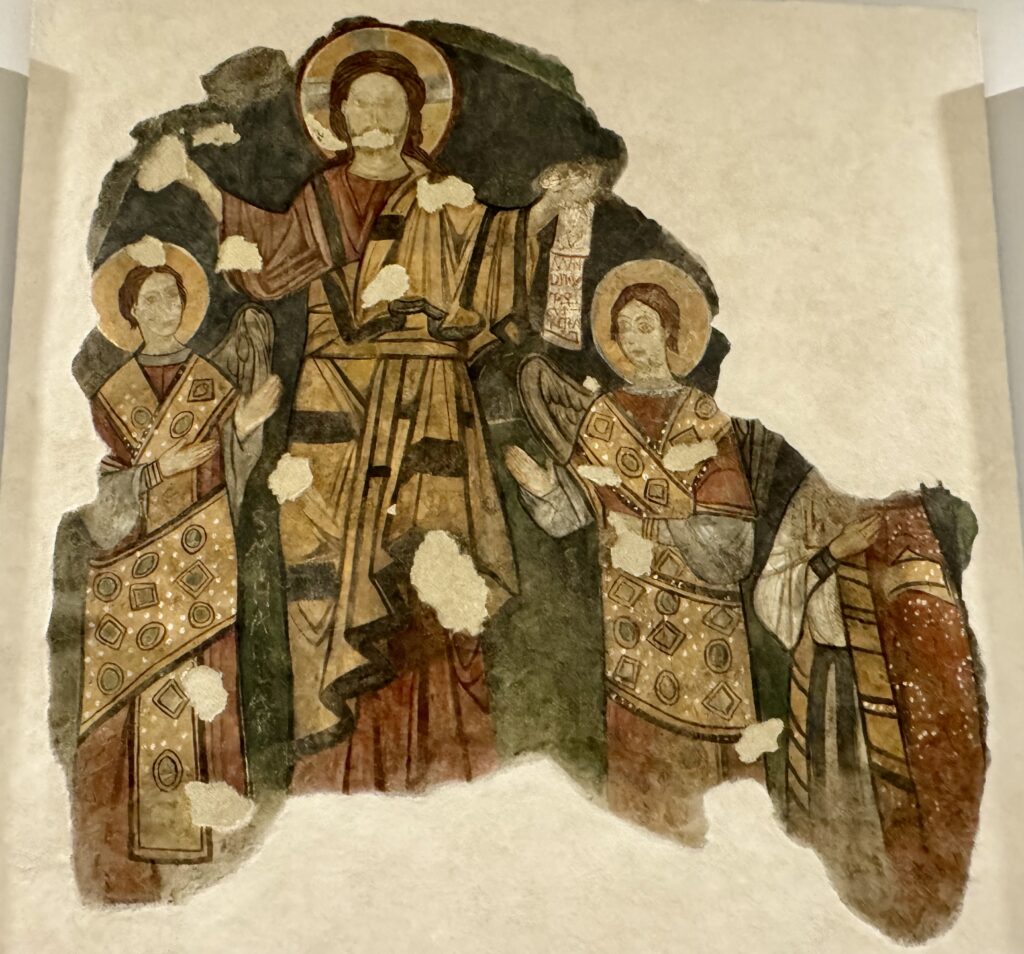
Museum
After the Nymphaeum, you walk down a modern catwalk from which you can see excavated rooms and a Roman bath.
This leads you to the site’s modern museum. It displays artifacts from the site’s excavations.
You’ll see sculptures, amphorae, Muslim ceramics, and the large fresco from the Oratory.
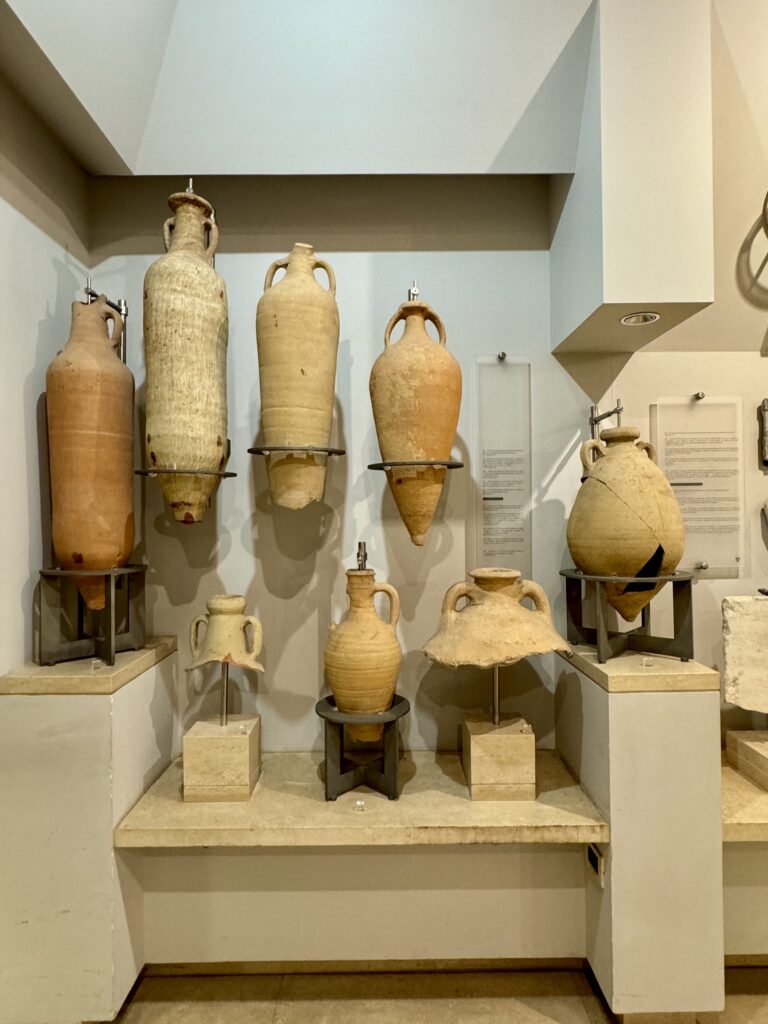
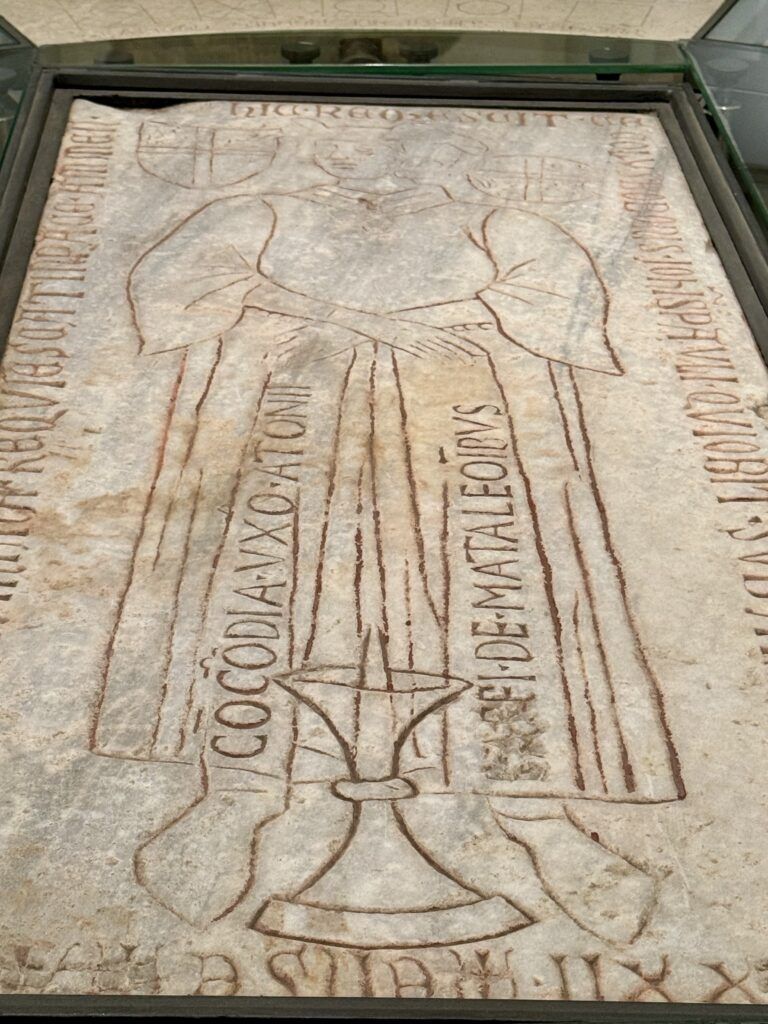
Practical Guide & Tips For Case Romane del Cielo
Address: Via del Clivo di Scauro
The Case Romane del Cielo are located under the Basilica of Saint John and Saint Paul. But there’s a different entry and the church dress codes do not apply. I tried to visit the basilica as well, but it was closed.
Hours: Open from 10:00 am to 4:00 pm on Monday, Wednesday, Friday, Saturday, and Sunday. Closed Tuesday and Thursday.
Tickets: € 10.
You can rent an audio guide for € 5. There is plenty of explanatory language in English. But it’s rather dense and very academic in tone.
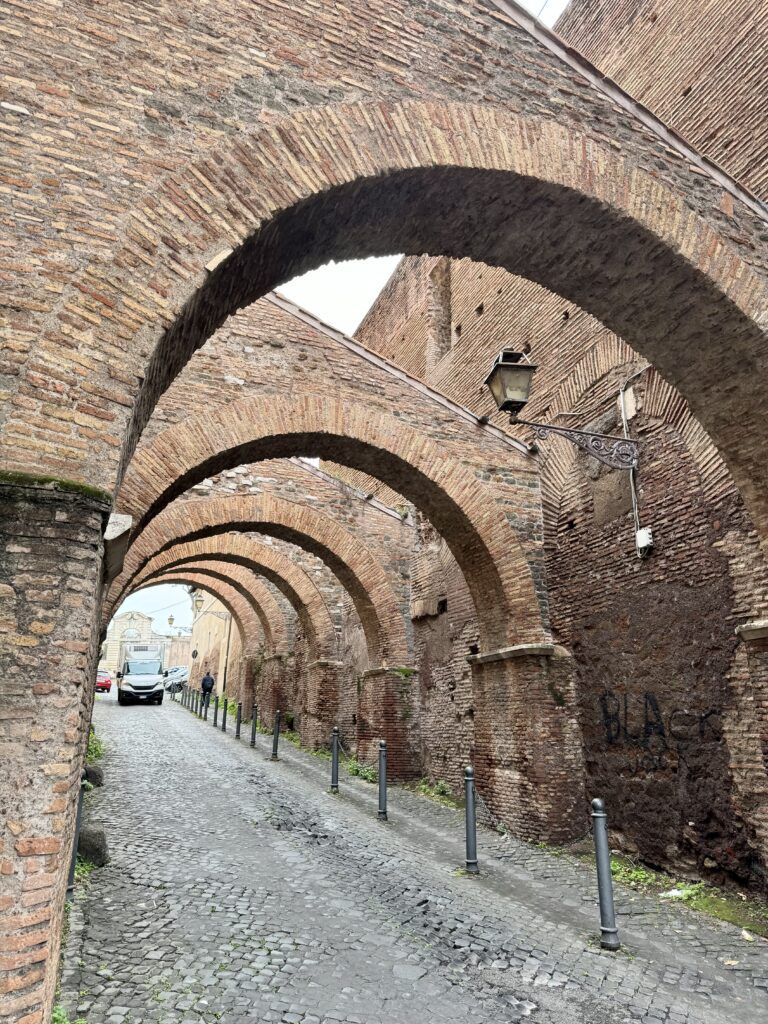
You can also download an app for more information. I didn’t do this, but assume it would contain the same information.
I think you would get the most out of the site if you booked a guided tour. This 3 hour tour includes both the Case and the underground of the Basilica of San Clemente.
Is Case Romane del Cielo Worth Visiting?
I definitely thought so. It’s a small, but very interesting museum. And it’s not often you get to ramble around homes from ancient Rome without a crush of tourist crowds.
To be sure, the frescos aren’t as well preserved as those in Pompeii (House of the Vetii and House of the Mysteries). But, still, who can resist ancient frescos and ruins? Not me.
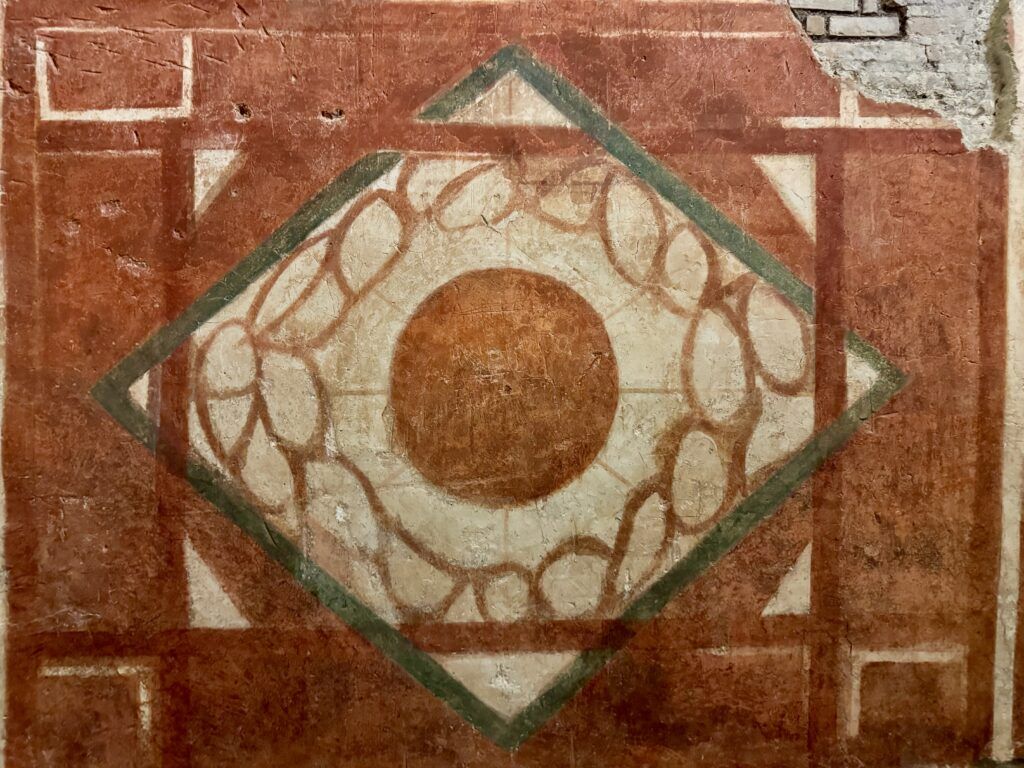
I hope you’ve enjoyed my guide to Case Romane del Cielo. You may find these other Rome travel guides helpful:
- 8 ways to spend 1 day in Rome
- 3 day itinerary for Rome
- 4 day itinerary for Rome
- 5 day itinerary for Rome
- Best museums in Rome
- Hidden gems in Rome
- Archaeological sites in Rome
- Guide to the Borghese Gallery
- Guide to Palatine Hill
- Guide to the Roman Forum
- Guide to the Colosseum
Pin it for later.

